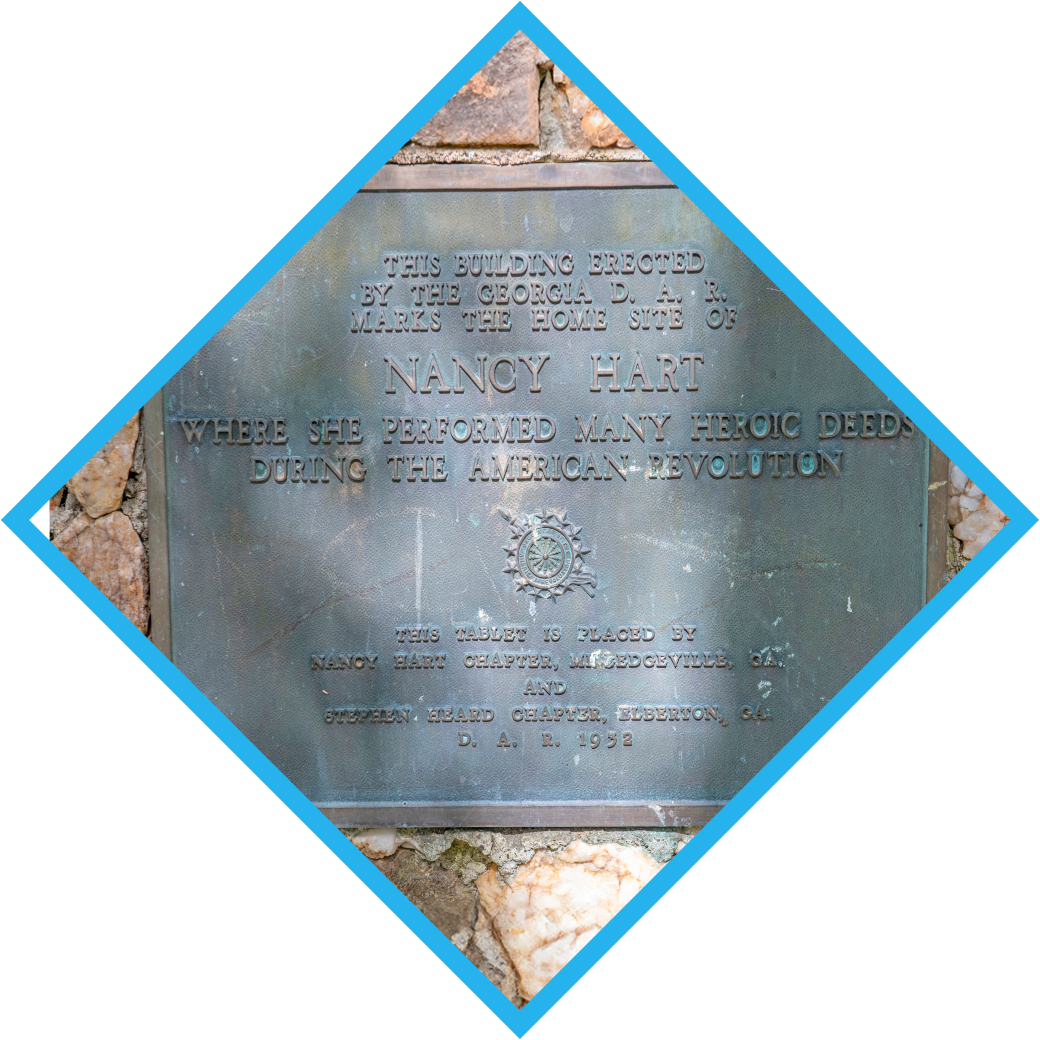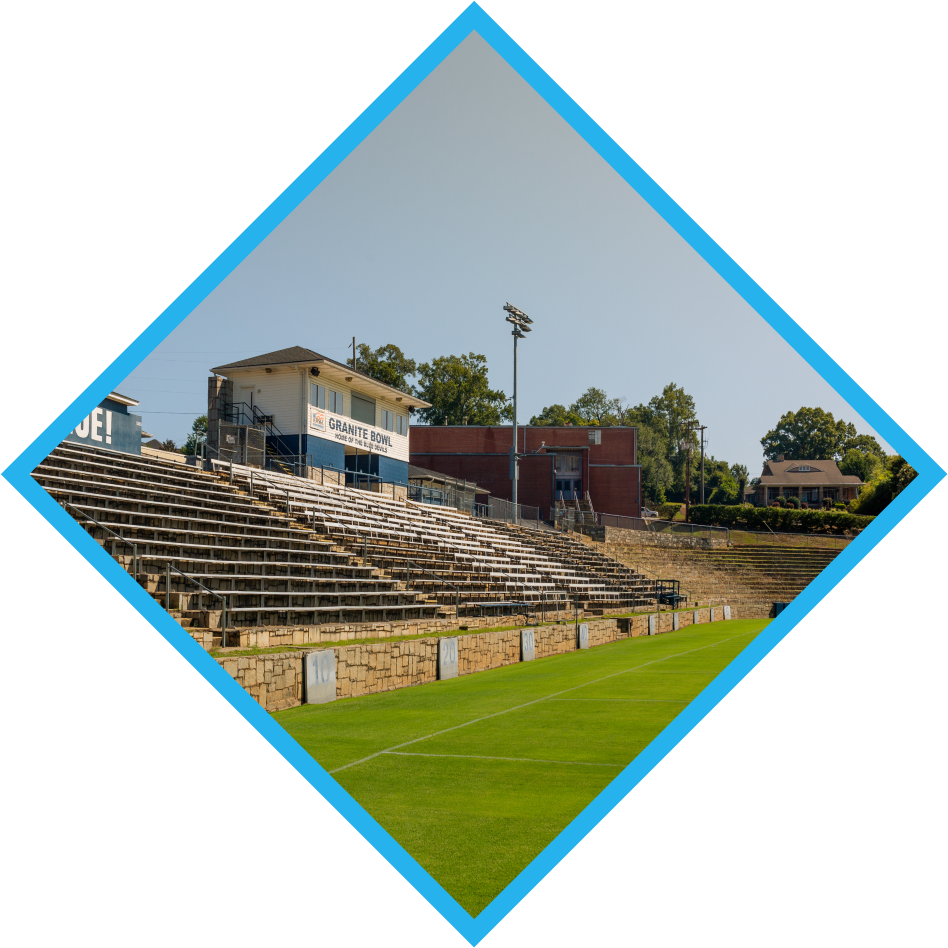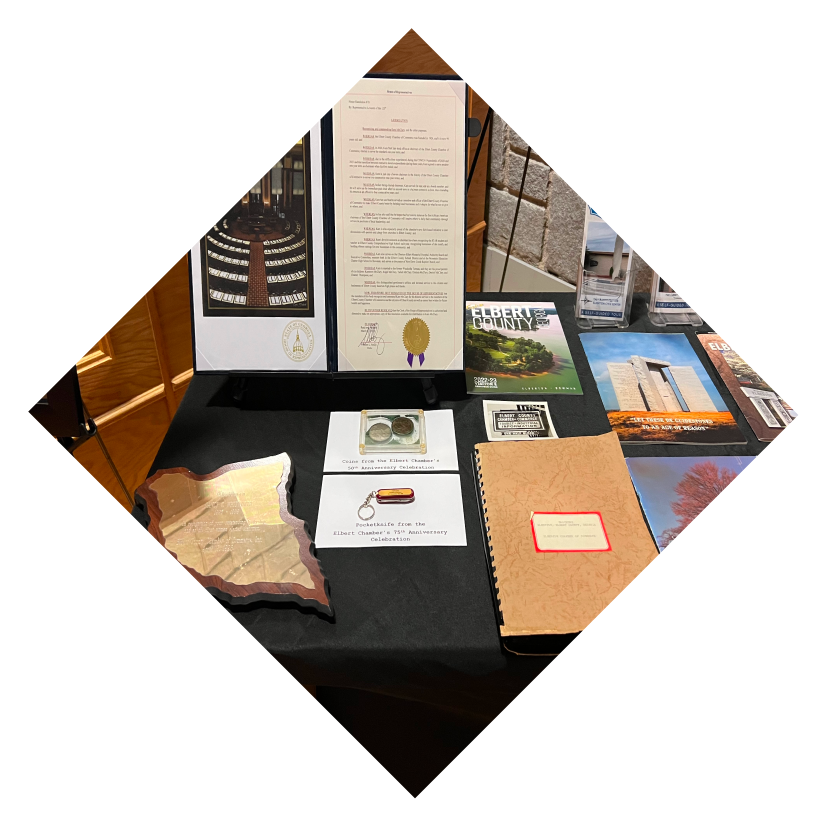


148 College Ave.
Elberton, GA 30635
 706-283-5651
706-283-5651
staff@elbertchamber.com
Georgia's most acclaimed female participant during the Revolutionary War (1775-83) was Nancy Hart. A devout patriot, Hart gained notoriety during the Revolution for her determined efforts to rid the area of Tories, English soldiers, and British sympathizers. Her single-handed efforts against Tories and Indians in the Broad River frontier, as well as her covert activities as a patriot spy, have become the stuff of myth, legend, and local folklore. The Daughters of the American Revolution erected a small park marking the approximate site of Hart's frontier cabin along River Road in Elbert County. During the Great Depression of the 1930s, Civilian Conservation Corps workers constructed a replica cabin on the site, using chimney stones from the original cabin, which had stood on the crest of a large hill overlooking Wahatche Creek.
Amenities: Free Parking, Free Admission,
Self-Guided Tours, Open Year-Round




The Elberton Granite Museum and Exhibit, operated by the Elberton Granite Association, Inc. Attracting more than 4,000 visitors annually, the museum contains exciting historical exhibits, artifacts, educational displays, and materials depicting current and past events in the rich heritage of the Elberton Granite Industry. See granite products and antique granite working tools used in the quarrying, sawing, polishing, cutting and sandblasting of granite, as well as the Confederate statue called "Dutchy." Admission is free.
“Old Dan Tucker’s” grave is the burial site of Reverend Daniel Tucker, who came to Elbert County after serving as a Captain in the American Revolution to take up a land grant and became one of the county’s most useful and best-known citizens. Rev. Tucker died on April 7, 1818 and was buried near his home. Today, his grave lies on a hill overlooking Lake Russell.
Farming the rich land along the Savannah River, the Reverend Tucker became a very capable farmer. Records show that at least one man was bound to Daniel Tucker to learn how to farm. One of his closest friends and neighbors was the former Governor of Georgia, Stephen Heard.
Another important job that Daniel Tucker had was ferrying people across the Savannah River between Georgia and South Carolina. Records in the Elbert County Courthouse show that in 1798, Tucker bought from Mr. John Heard for $1,000 in cash, part of the “Cook’s Ferry Tract” with a ferry and all the items that went with it. The ferry was well situated and continued to serve the traveling public until bridges were built for the coming of automobiles.
Besides farming and ferrying travelers across the river, Daniel Tucker was probably best known as a Methodist minister who cared deeply for the enslaved population. He spent much of his time teaching them and praying with them. Many of the enslaved persons adored him, creating verse after verse about him to show their appreciation for all that he did for them. Their song about “Old Dan Tucker” has become a famous part of American folk music.

The Granite Bowl is the off-campus playing arena for the football and soccer teams for the Elbert County Blue Devils. Built in 1952, the stadium was named the Granite Bowl for being made of more than 100,000 tons of blue granite. The only expense in the new stadium came with materials for the press box and concrete. Everything else was volunteered or provided free-of-charge by local businesses, particularly those businesses in Elbert County’s granite industry. The Granite Bowl has been listed as an important historic site by the Georgia Trust for Historic Preservation.
Petersburg, Georgia was an upriver market town in Elbert County that can sometimes still be seen via boat or from the trail at Bobby Brown Park. Planters would bring tobacco, then cotton, to Petersburg to float down the Savannah River to market in Augusta. During the peak of its prosperity (1800 to 1810) Petersburg was the third-largest city in Georgia, after Savannah and Augusta. The town gradually died out as the need to transport goods by boat diminished and eventually was covered by the waters of Clarks Hill Lake upon construction of Strom Thurmond Dam.

Takes a deep dive into African American culture at the Jim-Ree Museum. The tour provides plenty of details and facts. It’s a great way to learn about African American history through a rich and storied local lens. This family-run museum is doing the important work of preservation and education.
The Elbert Theatre opened on February 23, 1940, as the most advanced movie theatre in Northeast Georgia. The original Theatre featured the best in modern conveniences for its time: air conditioning, RCA Hi-Fi sound, Simplex Eurprex projection, an Evenlight diffusing screen, hearing aids, extra-large seats in a staggered formation for optimum viewing, and a “magic eye” drinking fountain.
For nearly 30 years, the Theatre served as Elberton’s gateway to the world of motion pictures, a regular entertainment spot for local residents. Movies eventually were no longer shown and the building fell into disrepair. The facility and land were purchased by the City of Elberton. Renovation began in 2000 and in 2005 it held its first modern theatre season.
The Bicentennial Memorial Fountain on Elberton’s town square was donated to Elbert County by the Granite Industry in 1976. It lists significant periods of local history on 13 panels symbolic of the 13 original colonies. A sculptured American Eagle sits atop the center shaft.
The Elberton Granite Association and its members maintain a changing (semi-annual) display of work showcasing the EGA members' capabilities.
The Richard B. Russell Dam and Lake is the third multipurpose project built on the Savannah River by the U.S. Army Corps of Engineers, Savannah District. Authorized in 1966 for hydropower generation, recreation, and flood control, the project got underway in 1976. The dam was built about 37 miles above the Strom Thurmond Dam. Hartwell Dam is about 30 miles upstream from the Russell site.
Richard B. Russell Lake covers 26,650 acres with an additional 26,500 acres of land surrounding the waters. Private, exclusive use is not permitted on Richard B. Russell Lake. Boat owners are encouraged to moor their boats at commercial marinas, use dry storage facilities or motor their boats to public launching ramps for removal.